Greater Oxon Hill: Supporting Community Development Through Façade Improvements

What We Did
- Research
- Façade and streetscape improvements
- Community Engagement
- Project Management
Partners
- Greater Oxon Hill CDC
Supporters
- State of Maryland - Department of Housing and Community Development

The Challenge: transform a suburban thoroughfare to an urban boulevard, making businesses more visible and accessible
The businesses along Livingston Road and MD Route 210 in Forest Heights’ commercial area include a vibrant mix of restaurants, shops and churches. The Greater Oxon Hill CDC envisioned creating a space that serves the community’s needs while reflecting and enhancing the vitality of the existing businesses.
Their vision is part of a long-term plan to make public realm improvements to the area to promote pedestrian safety, enhance area aesthetics, and support business growth to transform the MD 210 corridor from a suburban thoroughfare to an urban boulevard, making businesses more visible and accessible.

Incentivizing business owners
To create a more welcoming experience for business owners, residents, and visitors, Greater Oxon Hill CDC sought to create a facade improvement program to incentivize business owners to enhance their storefronts.
Supporting Black businesses is key to addressing systemic inequity in the United States.
Why it’s important: confronting significant disparities enhances Black businesses and advances the overall health of the neighborhood.
A Brookings analysis points to the devaluation of commercial properties in Black neighborhoods, leading to significant fiscal consequences for Black communities. The study found that in majority-Black ZIP codes, devaluation results in aggregate wealth losses of $171 billion for retail real estate.
The analysis states: “The commercial real estate (CRE) market [in Black communities] is relatively small compared to housing. However, because individual CRE assets are large and more valuable per square foot, their health can have an outsized influence on the well-being of a community.”
Confronting the significant disparities and systemic inequities responsible for devaluing Black communities presents a multi-faceted challenge, necessitating investment in the commercial areas of these neighborhoods. While seemingly small against the backdrop of the size of the challenge, the facade improvements enhance Black community businesses, contributing to the broader goal of advancing the overall health of the neighborhood.
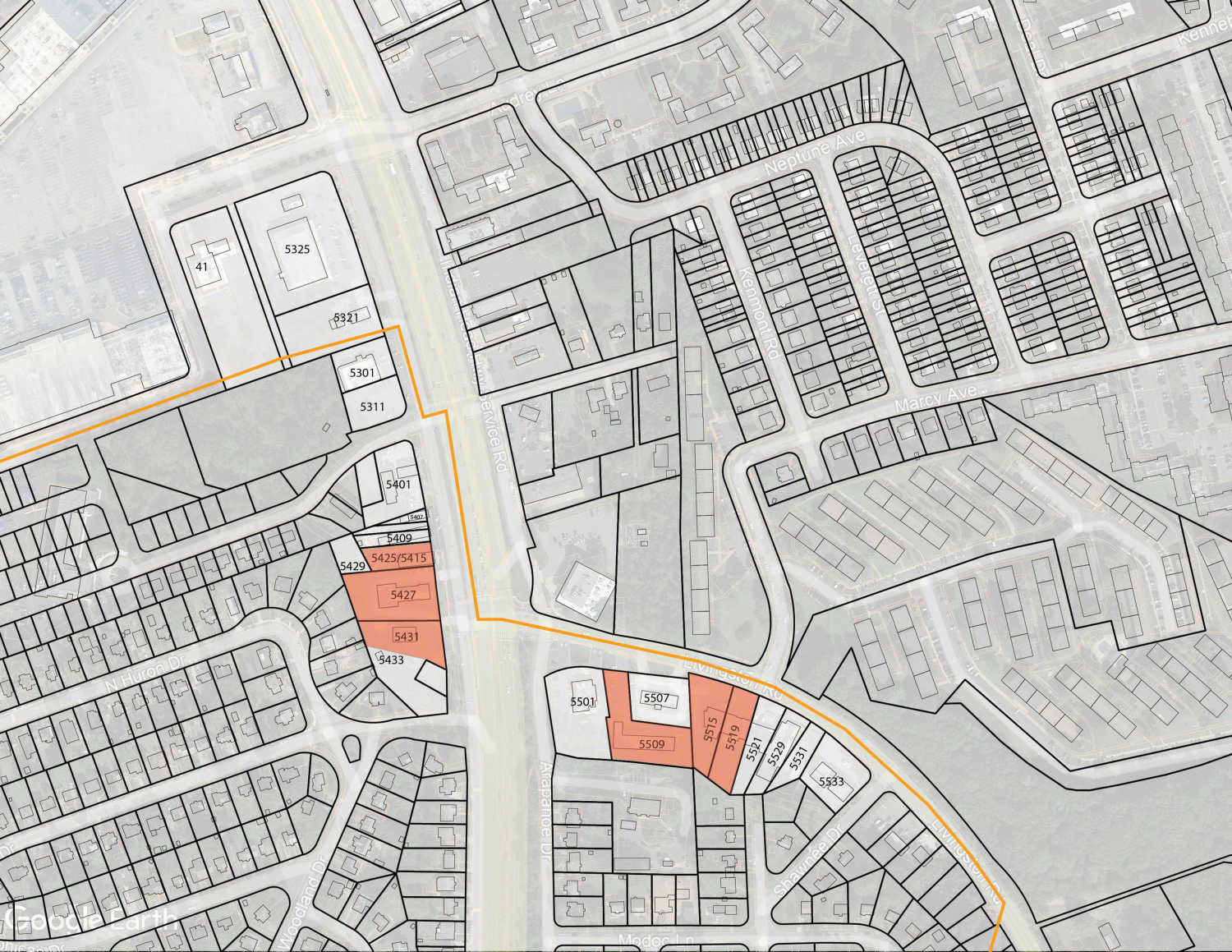
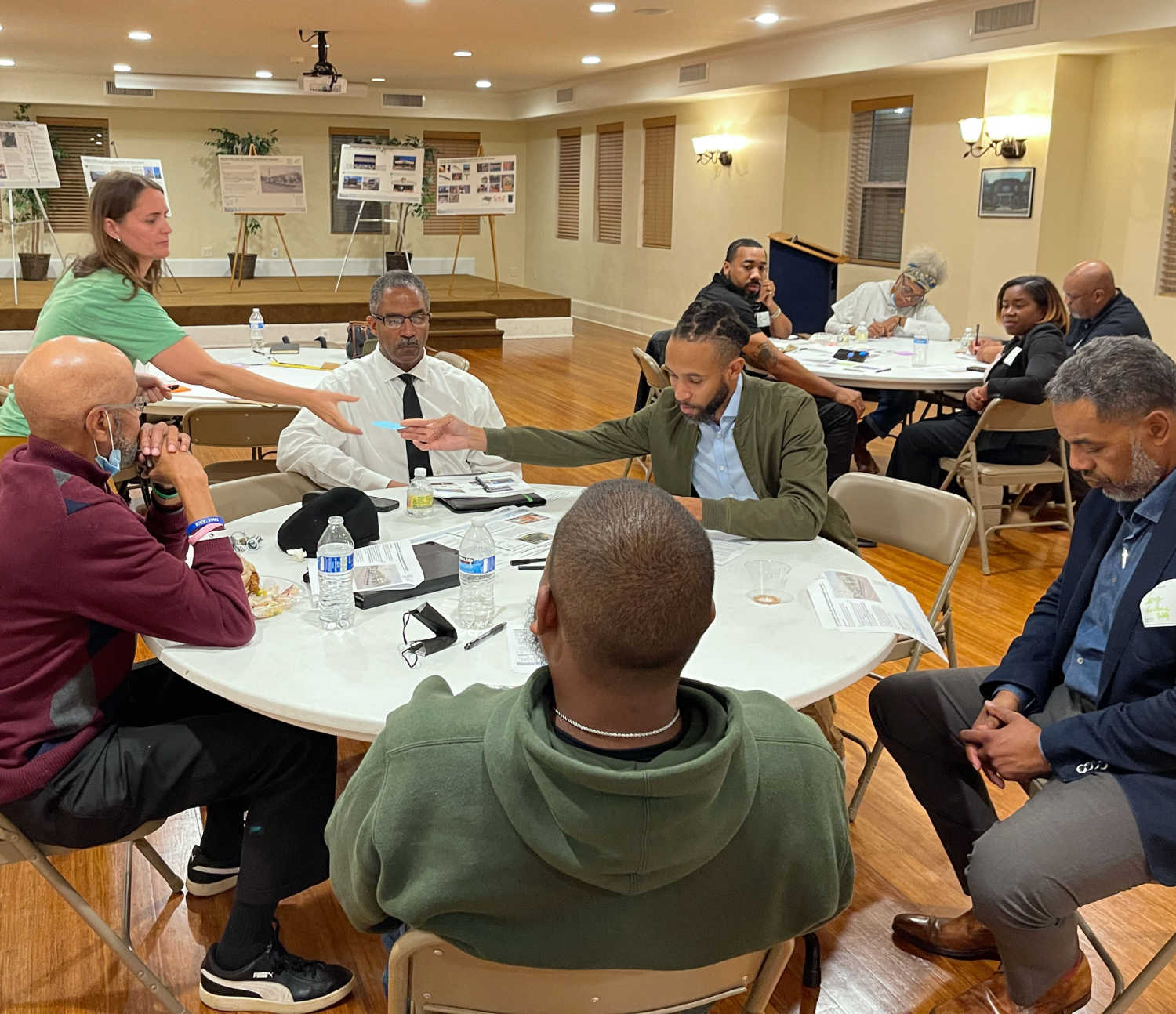
The Vision
NDC held multiple site visits to speak with the business owners and capture their goals for the façade improvements.
Their vision included the following:
Feel welcoming to families
Support a variety of uses
Reflect the diversity of the neighborhood
Support walkability and multimodal transport
Include benches, lighting, and sidewalk improvements
Enhance the streetscape with plantings
Include public art that celebrates the community

The Plan: show what’s possible through designs and recommendations
The team then developed design plans from the vision that included ideas for signage, planters, art, lighting, and color palettes and presented improvement plans to the businesses.
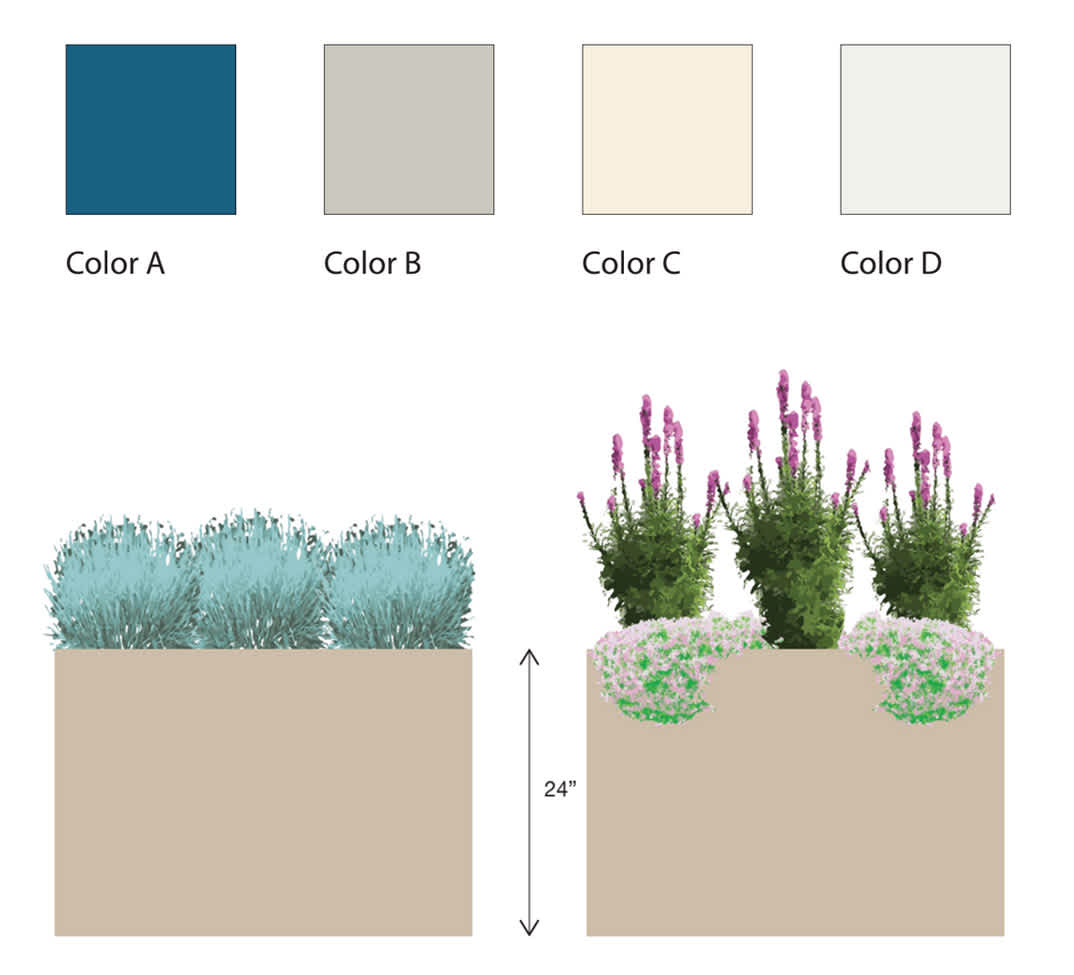
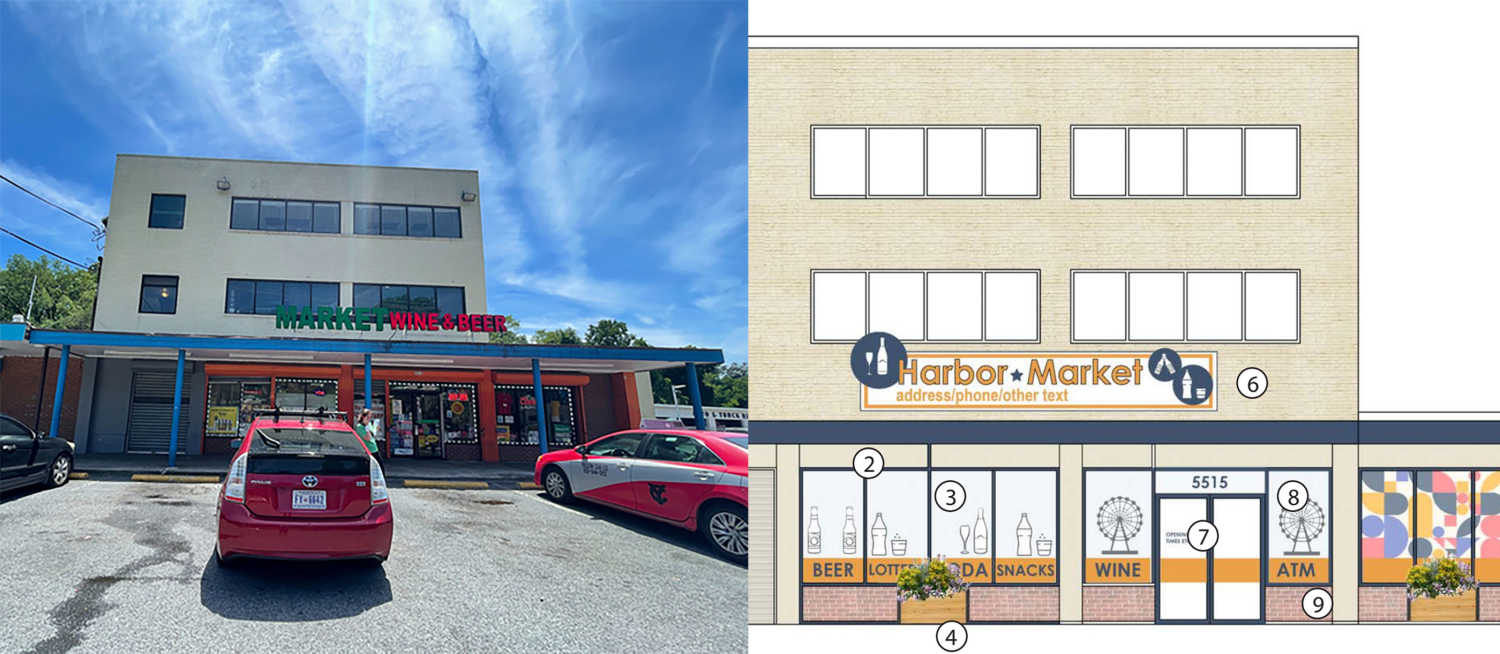


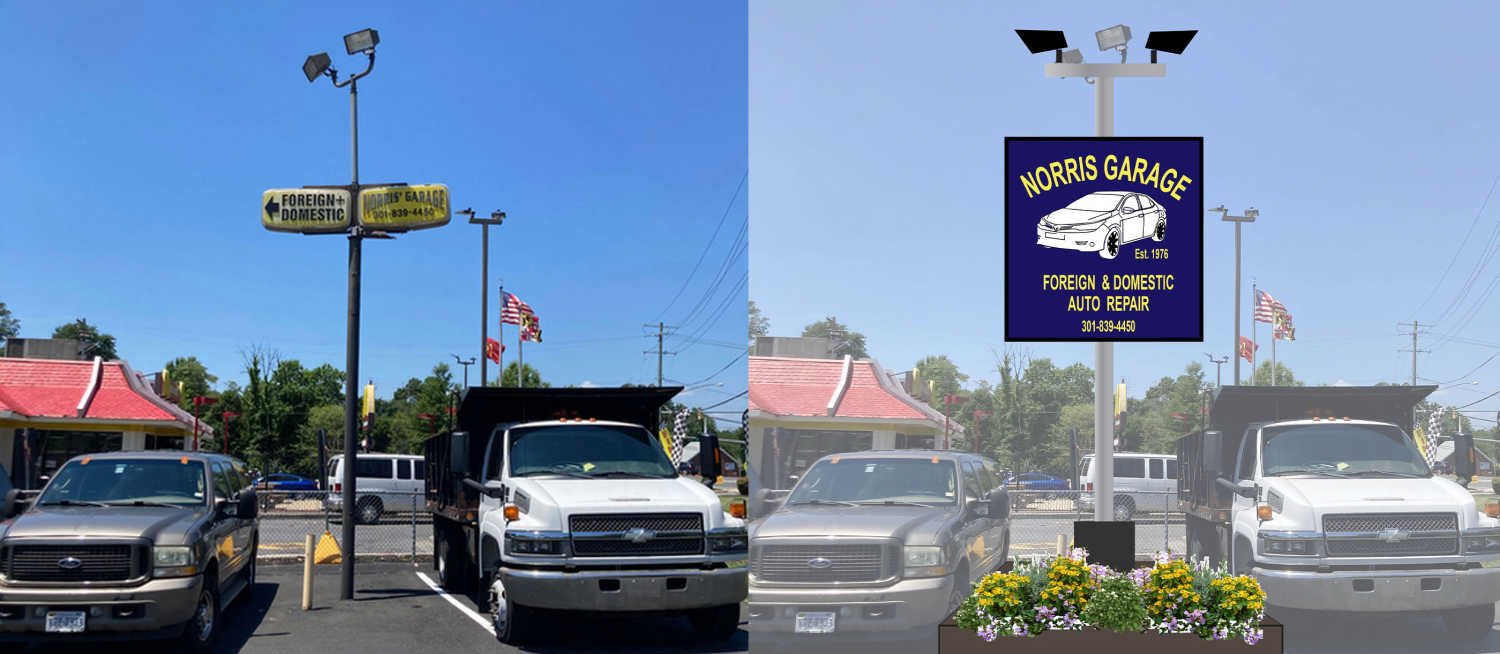


The Future
Along with Greater Oxon Hill CDC, the team organized a stakeholder meeting with businesses, property owners, and local government leaders to discuss the initial design ideas for the façade program and how it plays a role in the development of a future Greater Oxon Hill.
With the finalized designs complete, Greater Oxon Hill CDC is working with business owners and subcontractors to begin implementing many of the design ideas. While not all elements of the vision were attainable through a facade improvement program, the CDC is working on new funding sources to support larger-scale landscape design improvements, parking lot redesigns, and other elements identified in the vision.